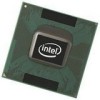Intel P8700 Data Sheet - Page 8
Terminology, Intel® Deep Power Down low-power state with P_LVL6 I/O support - virtualization
 |
UPC - 735858206174
View all Intel P8700 manuals
Add to My Manuals
Save this manual to your list of manuals |
Page 8 highlights
Introduction 1.1 • Digital thermal sensor (DTS) • Intel® 64 architecture • Supports enhanced Intel® Virtualization Technology • Enhanced Intel® Dynamic Acceleration Technology and Enhanced Multi-Threaded Thermal Management (EMTTM) • Supports PSI2 functionality • SV processor offered in Micro-FCPGA and Micro-FCBGA packaging technologies • Processor in POP, LV and ULV are offered in Micro-FCBGA packaging technologies only • Execute Disable Bit support for enhanced security • Intel® Deep Power Down low-power state with P_LVL6 I/O support • Support for Intel® Trusted Execution Technology • Half ratio support (N/2) for core to bus ratio Terminology Term # Front Side Bus (FSB) AGTL+ Storage Conditions Enhanced Intel SpeedStep® Technology Processor Core Definition A "#" symbol after a signal name refers to an active low signal, indicating a signal is in the active state when driven to a low level. For example, when RESET# is low, a reset has been requested. Conversely, when NMI is high, a nonmaskable interrupt has occurred. In the case of signals where the name does not imply an active state but describes part of a binary sequence (such as address or data), the "#" symbol implies that the signal is inverted. For example, D[3:0] = "HLHL" refers to a hex 'A', and D[3:0]# = "LHLH" also refers to a hex "A" (H= High logic level, L= Low logic level). Refers to the interface between the processor and system core logic (also known as the chipset components). Advanced Gunning Transceiver Logic. Used to refer to Assisted GTL+ signaling technology on some Intel processors. Refers to a non-operational state. The processor may be installed in a platform, in a tray, or loose. Processors may be sealed in packaging or exposed to free air. Under these conditions, processor landings should not be connected to any supply voltages, have any I/Os biased or receive any clocks. Upon exposure to "free air" (i.e., unsealed packaging or a device removed from packaging material) the processor must be handled in accordance with moisture sensitivity labeling (MSL) as indicated on the packaging material. Technology that provides power management capabilities to laptops. Processor core die with integrated L1 and L2 cache. All AC timing and signal integrity specifications are at the pads of the processor core. 8 Datasheet















